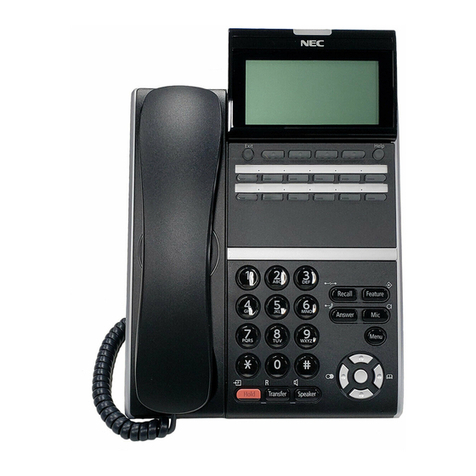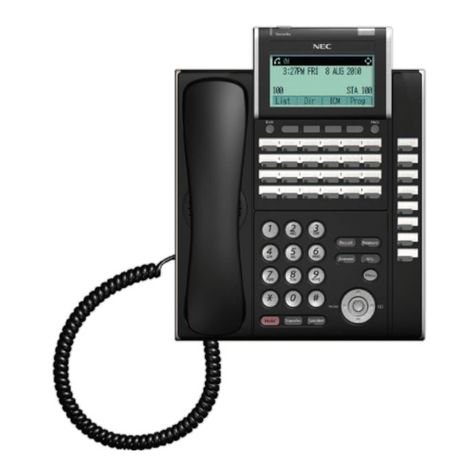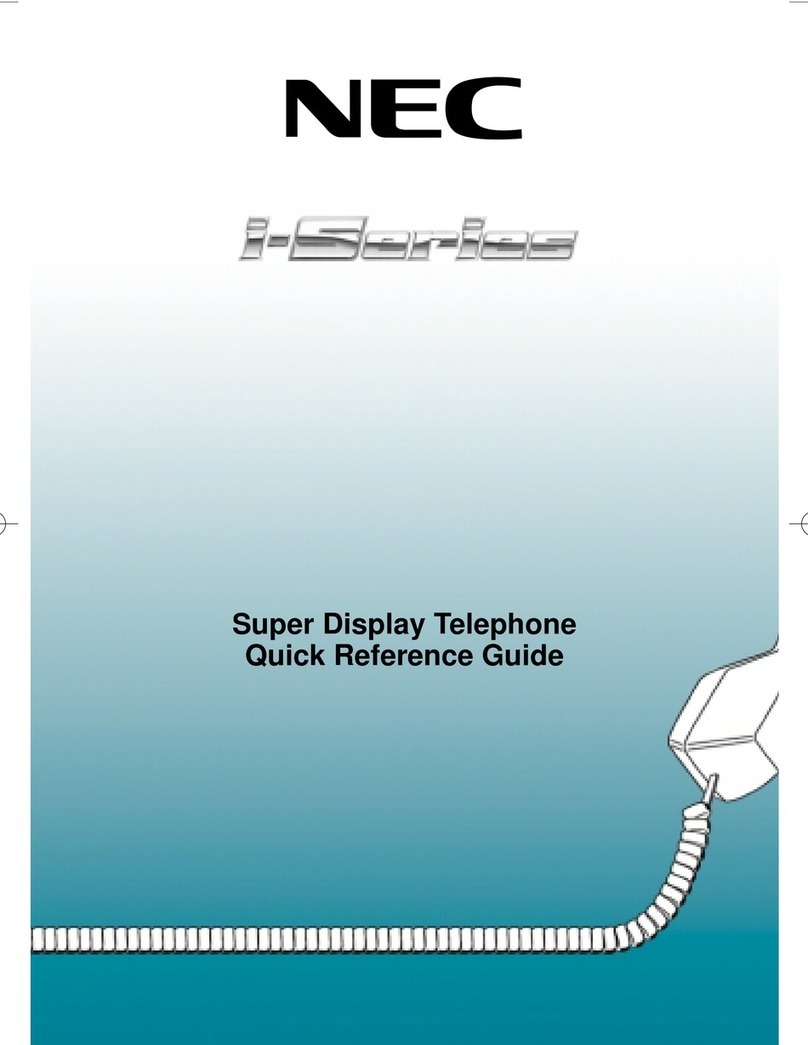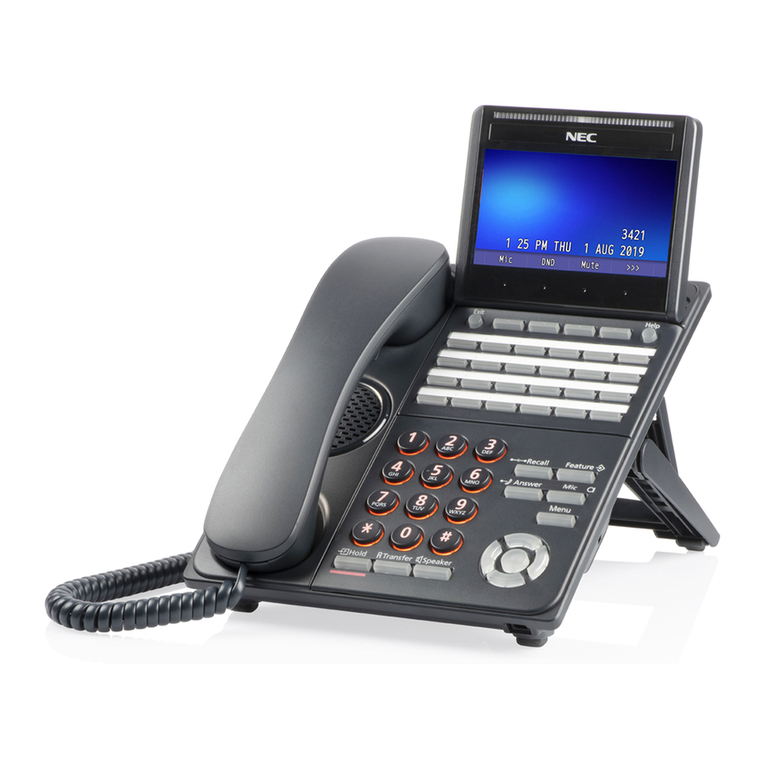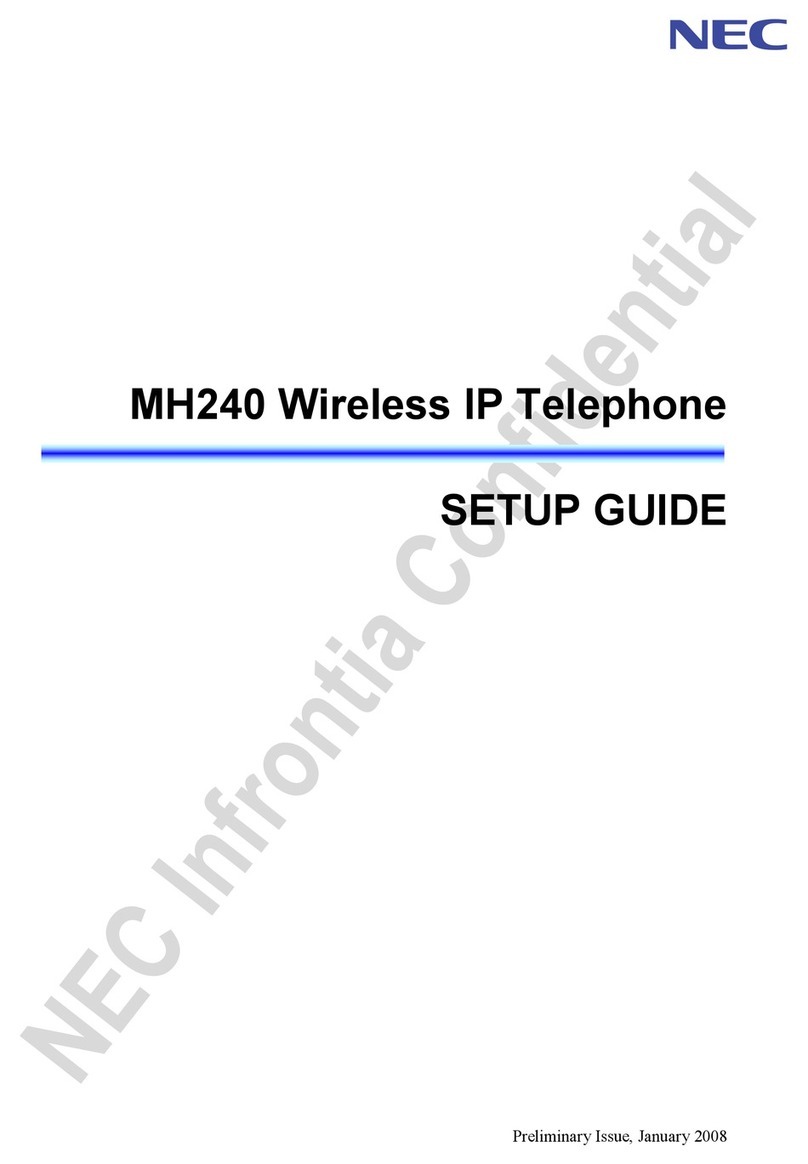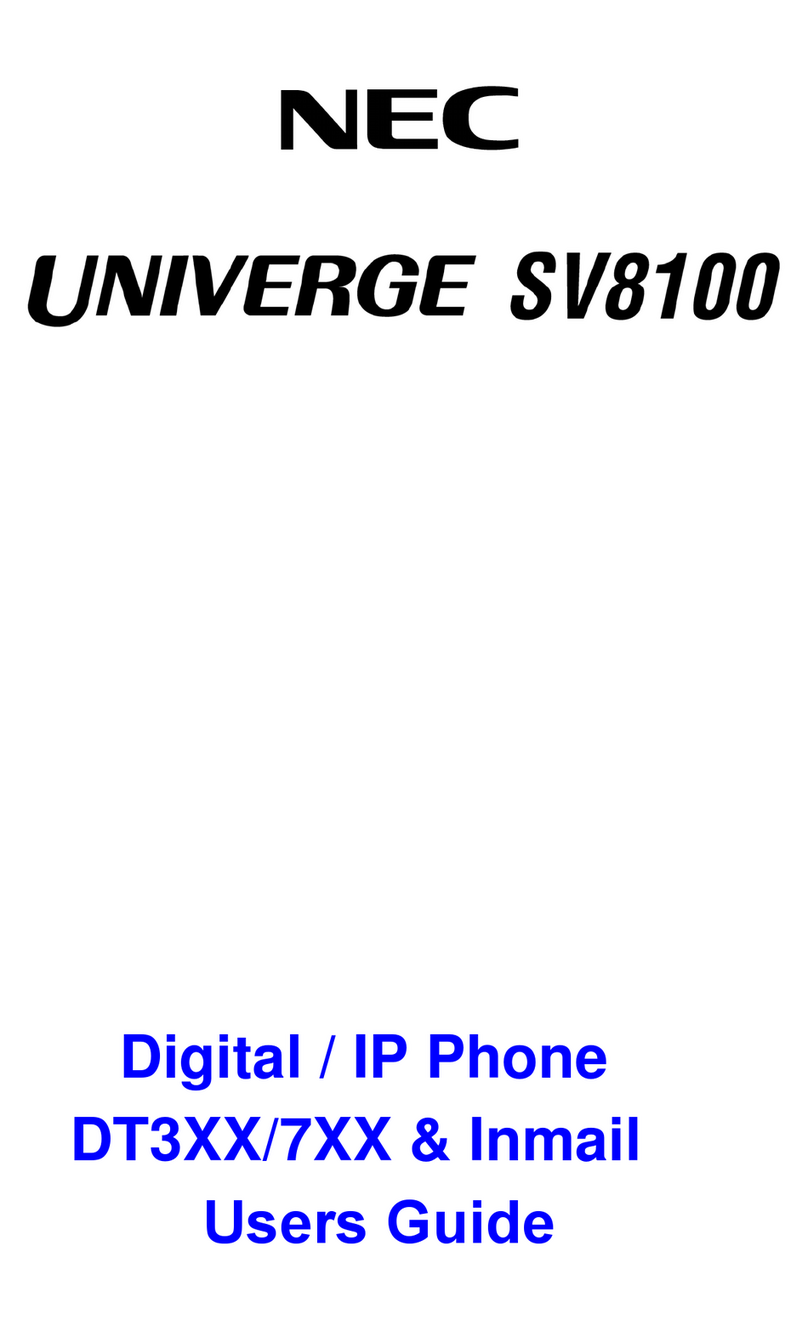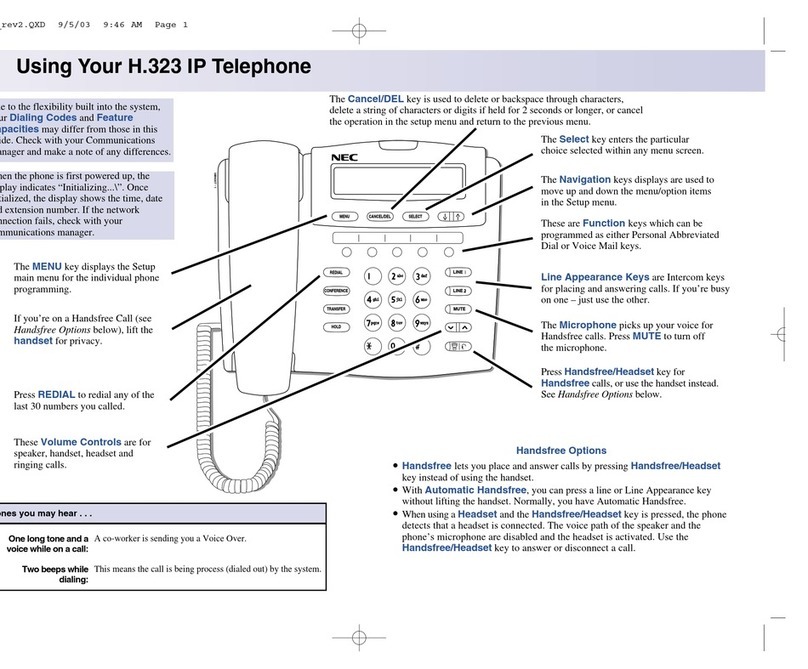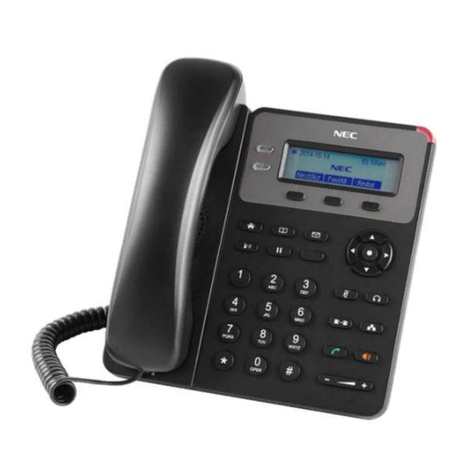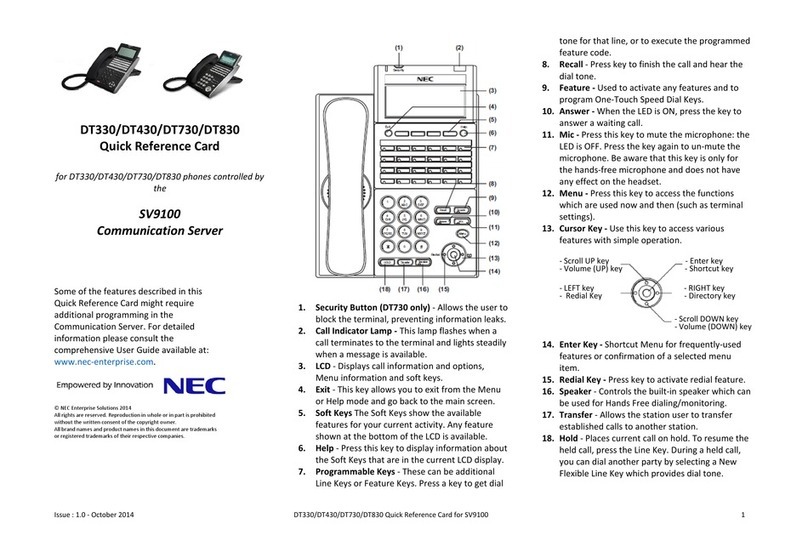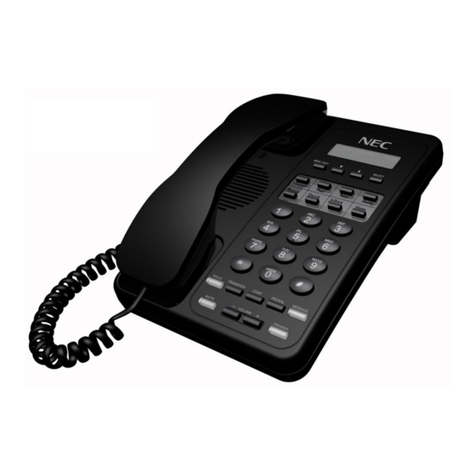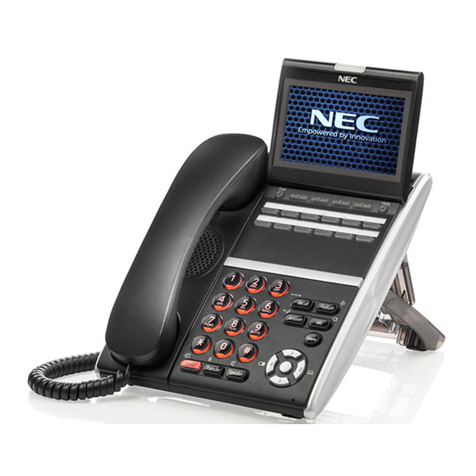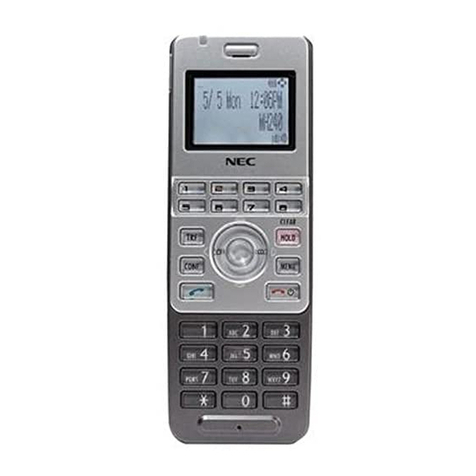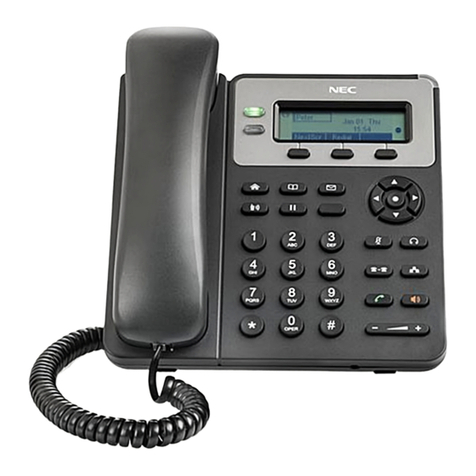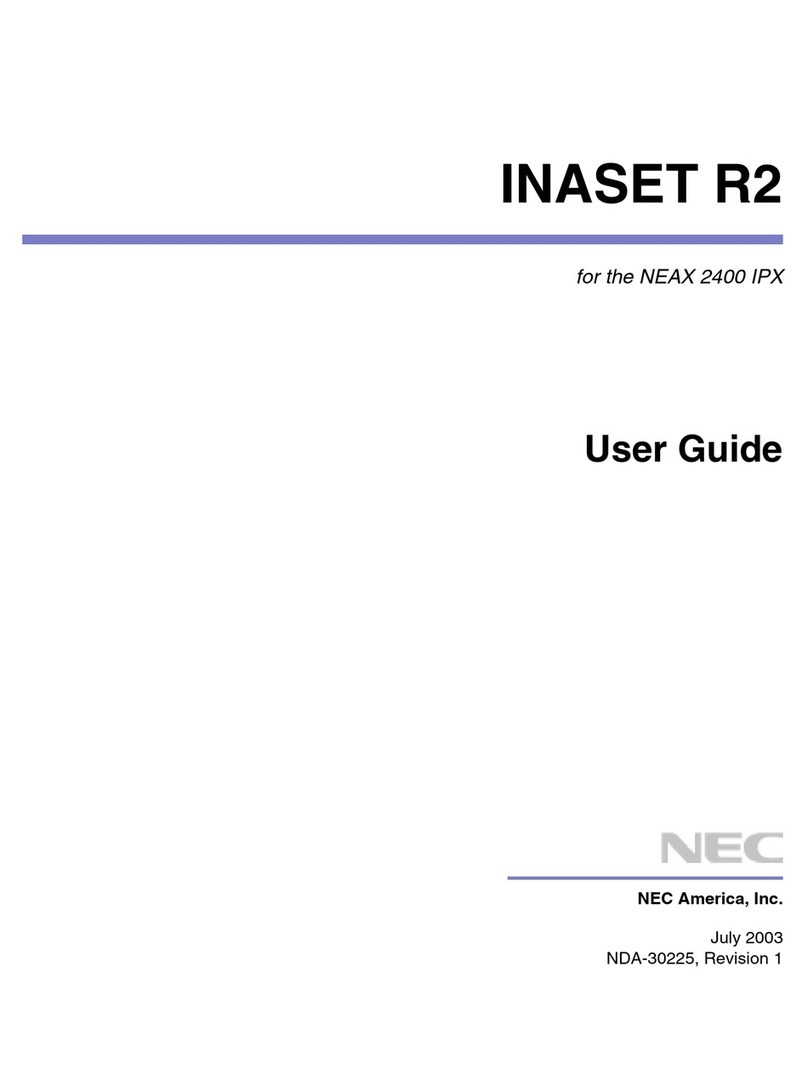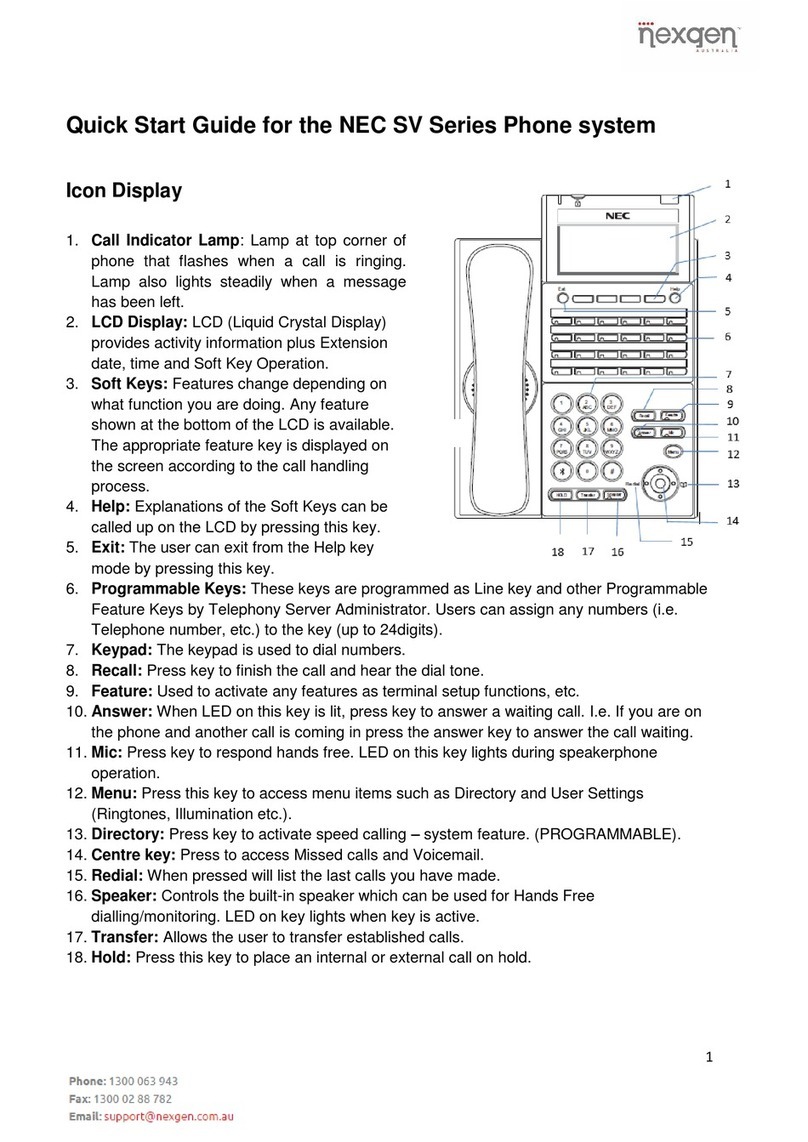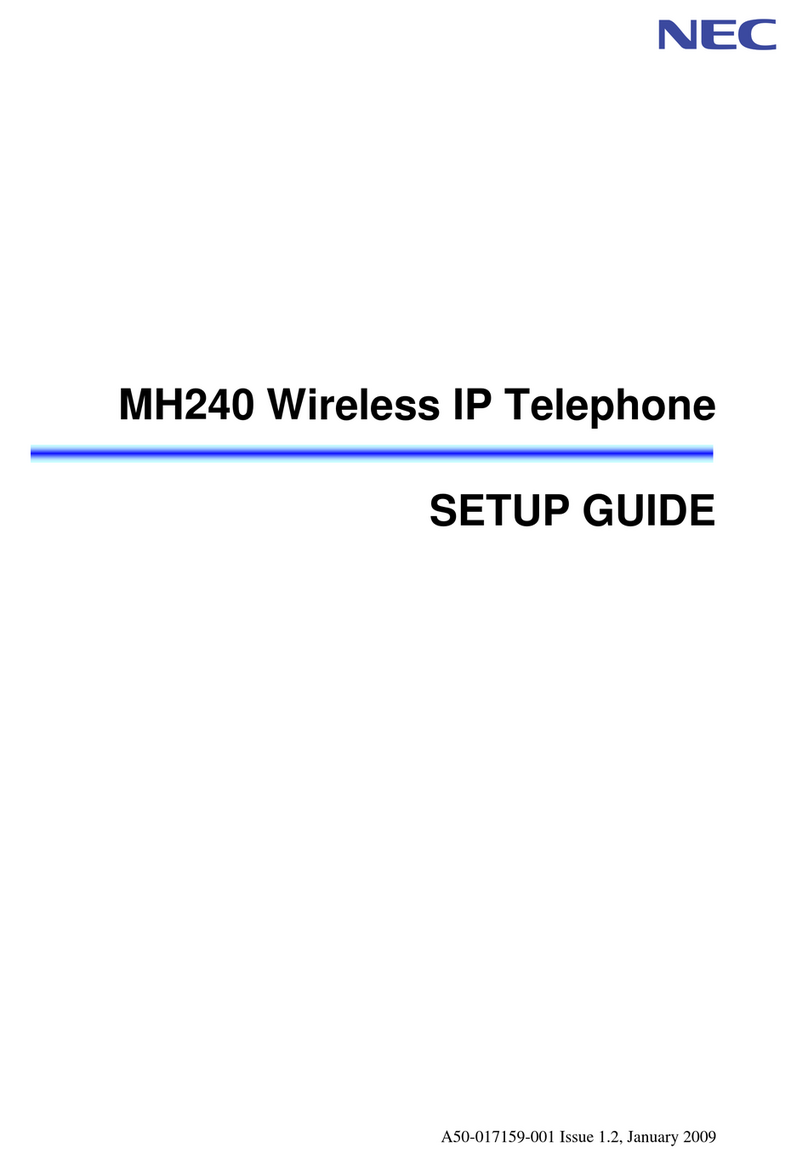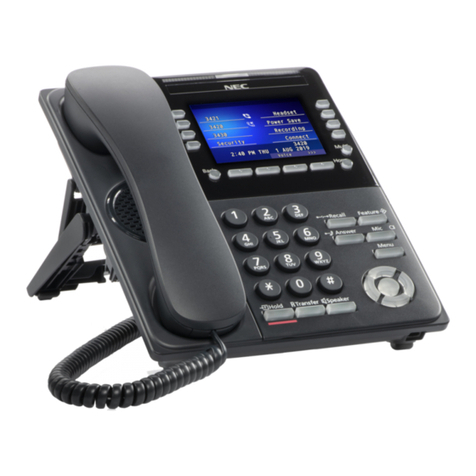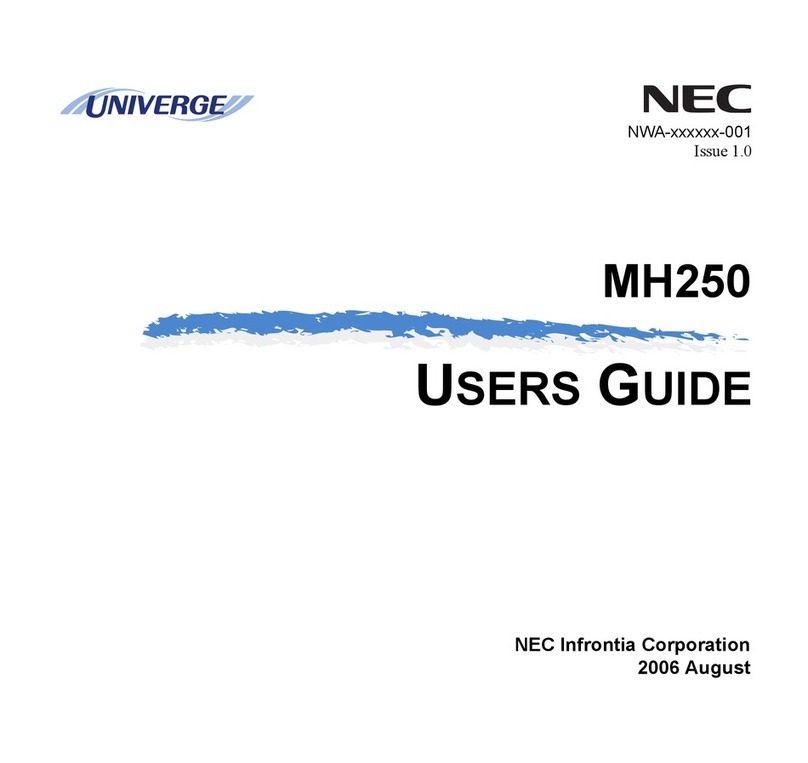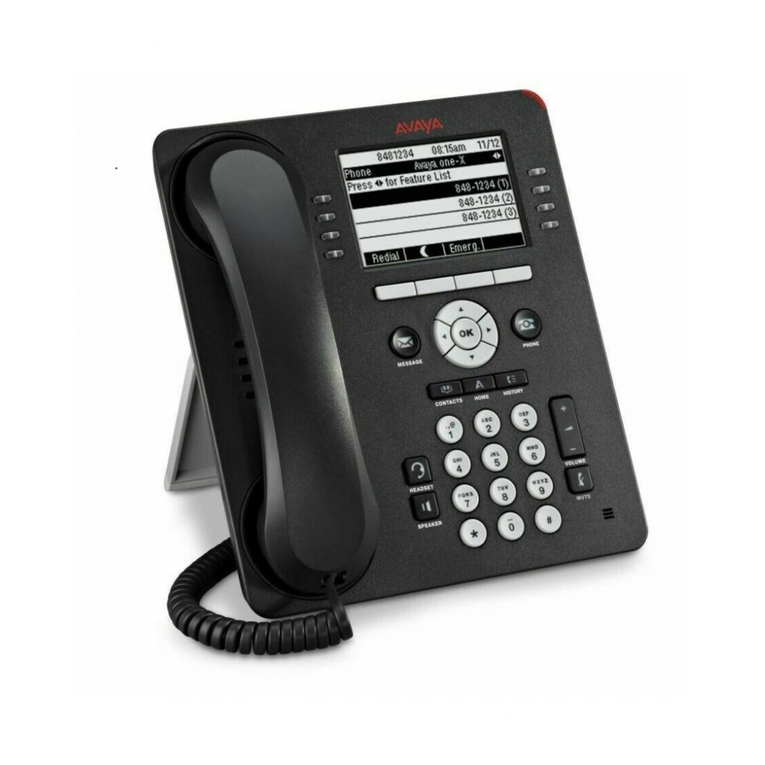1.
Warning
Do not use the unit when you notice smoke, strange smell or other unusual happenings. It may cause fire if you
continuously use them. Turn off the power switch of the phone system immediately. For the recharger, disconnect
the power plug immediately. Confirm that smoke is ceased, and then contact the nearest NEC service office.
Never attempt to repair those units by yourself.
If you had an accident such as dropping the phone and broke the unit, turn off the power of the phone system
immediately. For the recharger, disconnect the power plug immediately. Contact the nearest NEC service office.
If you keep using those units, they may cause fire or electrical shock.
If water smeared into the unit, turn off the power of the phone system immediately. For the recharger, disconnect
the power plug immediately. Contact with the nearest NEC service office. If you keep using those units, they may
cause fire or electrical shock.
Do not insert flammable or metal objects into the units. If a foreign object were accidentally placed into the units,
turn off the power of the phone system and plug out the power adapter. Contact the nearest NEC service office.
If you keep using those units, they may cause fire or electrical shock. Pay special attention to children to prevent
from similar accidents.
Do not attempt to disassemble nor modify the units. It may cause fire, electrical shock, or system malfunction.
Modification by a user is prohibited by law.
Do not open the units intentionally. It may cause electrical shock or system malfunction. Ask test adjustment,
and repair of the units for the nearest NEC service office.
Do not twist, put a heavy object, and push the phone system. Such actions may cause damage, fire, or injuries.
Do not place a container with water such as a vase, a plant pot, a cup, cosmetics, chemicals, nor a small metal
object. Splashing water over the units and foreign metal object inserted into the units may cause fire or electrical
shock.
Do not use the unit in a high humid area such as a bathroom or near a humidifier. They may cause fire, electrical
shock, or system malfunction.
Use the specified power adapter, which is attached to the unit. Other adapters may cause fire or system
malfunction.
Do not damage, or modify the power adapter cord. Do not kink, pull, twist, or bundle it. Do not put a heavy object
